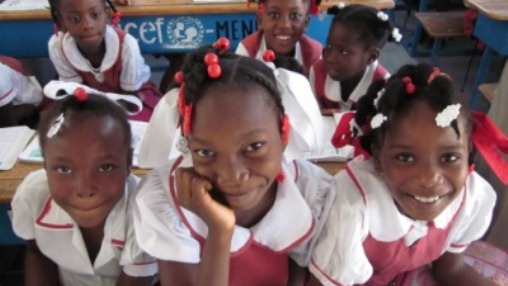“I love school because I learn things. When I grow up, I will work with computers.” Seven-year-old Pétion Jordeans studies at ADEG, a co-educational school that receives a subsidy from the Haitian Government to accommodate disadvantaged children.
Until very recently, Pétion lived in one of the camps for displaced persons located close to the institution, and in all likelihood would not have been able to attend school without the subsidy.
The mother of Emmanuelle Durvil, a nine-year-old girl, said, “I don’t work, without the subsidy I would not be able to send my daughter to school.” Emmanuelle wants to finish her schooling at that institution and become a teacher.
A key issue in the Government’s development policy
Launched in 2007, the subsidy program is one of the pillars of the Haitian Government’s national Education for All strategy. Developed on the basis of this strategy, the Education for All program includes the training of teachers, institutional strengthening of the Ministry of National Education and Vocational Training (MENFP), and improvement in reading skills, in addition to the subsidy.
Under the last component, health and nutrition, 85,000 children have received a hot meal since 2007.
In 2011, President Martelly made education a cornerstone of his government program and launched the Universal, Free, and Compulsory Education Program. During the 2011-2012 school year, this program allowed more than one million children aged 6 to 12 to attend school free of charge.
The challenge is a daunting one: Haiti has one of the lowest enrollment rates in the world - 76 percent at the primary level and only 22 percent at the secondary level. Moreover, 85 percent of the teachers are not qualified to teach at the primary school level.
Approximately 500,000 children were not enrolled in school before the earthquake. Income inequalities have led to sharp disparities in access to education among the regions and social classes.
Since 2007, the World Bank has contributed US$108 million to the Education for All program.

